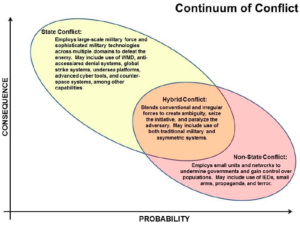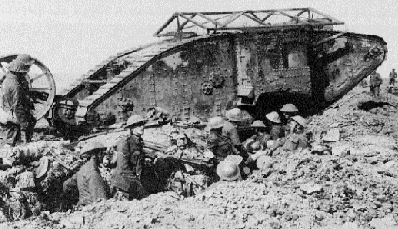New Military Strategy Shows A Dangerous World – But Not How To Deal With It
Posted on
WASHINGTON: The Pentagon is painfully aware the world is changing. What the military’s clearly still struggling with is how we should change to cope.
That’s the less-than-reassuring implication of the new National Military Strategy, released a week ago by the outgoing chairman of the joint chiefs, Gen. Martin Dempsey. (I discuss the strategy and its shortcomings with Richard French of Regional News Network in the video above). While expectations tend to be low for such bureaucratic products, the new strategy make some important insights into new threats — only to prescribe familiar solutions.
“On the positive side the diagnosis is basically correct with regard to the strategic environment, [but] when it boils down to how the military needs to think about it, it becomes very linear again,” said Nathan Freier, an associate professor at the Army War College.
Dempsey lays out the sheer complexity of the security environment, what he calls “the most unpredictable I have seen in 40 years of service.” The US simultaneously has to cope with intractable and metastasizing terrorist threats; a “low but growing” risk of war with a major power like Russia or China; and, in between, “hybrid threats” that combine the lethal adaptability of guerrillas with the resources and firepower of a state. Russia’s deniable invasion of Ukraine with local proxies and covert forces is a hybrid example of a major military power using guerrilla tactics. The Islamic State‘s ability to seize and hold territory is a hybrid example of an irregular force acting, in limited ways, like a nation-state.
But the strategy tries to place all these diverse threats on a single axis, with non-state conflicts deemed highly probable but less dangerous, while war with major states is low probability but high danger. That kind of thinking may be dangerously simplistic.

Conflict spectrum from the 2015 National Military Strategy
A major power like Russia can do a lot of damage without ever directly employing its conventional military, instead staying below the threshold of war while using everything from gas prices to hackers as a weapon. Conversely, a non-state group like the Islamic State can create global terror and disruption far out of proportion to its local military strength, using social media instead traditional command-and-control.
“10, 15, 20 years ago the concept of leaderless resistance, that was a cutting edge concept,” Freier told me. “Now this idea of leaderless resistance is becoming much more real and tangible. [Isolated] individuals are acting on ideas that are coming from very far away.” While they may never make direct contact with the terrorist group in whose name they strike, he said, “they are virtually mobilized by their connectivity to this broad community of interest.”

The Next Great War?
If leaderless, self-organizing terrorists at the nightmare at the so-called “low” end of the spectrum, then a major war with a major state is the nightmare at the high end. Dempsey warns that America’s technological advantage is eroding, a fear I’ve watched rise over the last two years to the top of the Pentagon agenda. Dempsey also warns such a war is likely to be “prolonged.”
But what would a major war look like in the 21st century, let alone a long one? We’ve had peace between great powers for so long, and military technology has changed so radically since World War II, that it’s hard to imagine. Dempsey certainly doesn’t say. But it’s unpleasantly probable that the US would run out of smart weapons in a hurry, leaving only the option of grim, grinding attrition.
In World War I, for example, both sides used up their pre-war stocks of artillery shells within ten weeks, said John Stillion of the Center for Strategic and Budgetary Assessments. “The ‘shell famine’ and massive losses on a battlefield dominated by firepower resulted in prolonged stalemate,” he said. Then in World War II, Stillion went on, the US and Japanese navies both sank or damaged so many of each others’ carriers in the first 12 months after Pearl Harbor that “there was not another carrier battle for 19 months as both sides rebuilt their forces.”
You can even look back to the US Civil War, said Stillion, where the initial Battle of Bull Run shocked both sides into stepping back and mobilizing for a long war. “History shows wars between great powers are generally prolonged because neither side is able to inflict enough damage on the other fast enough early in the conflict to achieve a knock-out blow,” he told me.
Such a war today would look very different from either Afghanistan or World War II, added fellow CSBA scholar Bryan Clark: “Today, our industrial base could not ramp up production of today’s sophisticated platforms and weapons like we did with more basic ones back in the 1940s.” Replacing the losses from the initial clash would require major retooling.
Such a massive, prolonged conflict is another challenge we’ve not yet figured out how to face.
“Where the strategy falls short is in its use as a strategy,” Clark told me. “The document acknowledges resources are constrained, but does not describe how U.S. forces will adapt their ends — e.g., ‘defeat’ may not be possible — or develop new ways to pursue their objectives with more limited means than they may have had in the past.”
“Overall,” Clark said, “it ends up being more of a statement of intent, rather than a useful strategy that would help planners, capability developers or budgeteers make decisions about where they should put the limited time and resources available to the Department of Defense.”
Subscribe to our newsletter
Promotions, new products and sales. Directly to your inbox.
